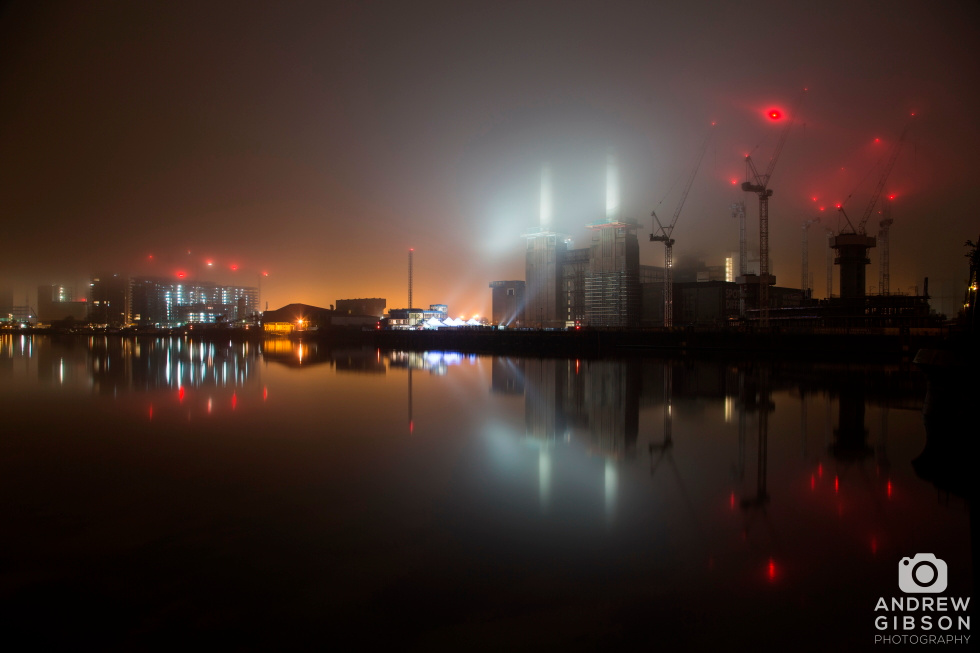2am Power Down
I didn’t think I’d photograph this icon of London industrial prowess again; one of the finest and most recognisable buildings the capital – and indeed the country – has to offer. When I last visited in August the first of the chimneys was being deconstructed and I figured it would likely be converted and surrounded by apartment blocks next time I took the camera out in its vicinity.
But from the back of a taxi cab bound for the Ice Bar it loomed into view, front lit and shrouded in a sea of fog and tower cranes. I knew I’d be heading out in the small hours for another take on it…
Battersea Power Station represents for me what architecture should be. OK, it’s an industrial site, it’s purpose entirely functional, but why not make it look magnificent in its own right? No reason at all. At the planning stage there was considerable opposition to the siting of London’s first large power station in Battersea on the grounds of it being too big, an eye-sore, too polluting. The London Power Company responded by engaging the services of the man responsible for Liverpool’s imposing gothic cathedral and the red ‘K2’ telephone box – Sir Giles Gilbert Scott – to pretty it up. The detailed exterior walls make up the largest brick-built structure in Europe with the four chimneys restyled akin to classical columns. It quickly found favour with Londoners and when the threat of closure reared its head in the seventies it was listed to guard against its loss. Of course listing doesn’t guarantee a building’s future, and following full closure in 1983 it slid towards dereliction – a state it has remained in ever since. Successive regeneration schemes came to nothing and the thought of anything actually happening became an increasingly remote prospect. But it held on in there.
Things are changing now. The huge waterside cranes are missing from this shot, having been removed for restoration off-site. The apartments that will flank the development are rising from the wasteland and the chimneys are coming down – one by one, to be rebuilt identically.
So why then, if Britain can deliver something like BPS during the Great Depression, can’t we put up anything of any note today? Local authority housing looks appalling, identikit housing developments betray their high price tags, industry looks dull and functional, post-modernism seems to have delivered a never-ending succession of bland buildings and the only exciting developments are connected to redeveloping the past – far too much of which has been lost. Is it the fact that nobody has the skills? Or that everything has to be done as cheaply as possible? Or do people just not care about their surroundings?
Well, it’s probably a combination of those factors, but it makes preserving places such as this all the more important – not just to respect the architectural greats of the past and mark our heritage, but because it’s hard to imagine the buildings of today ever invoking such opinion 50 years down the line.
As I walked over Vauxhall Bridge and down Grosvenor Road in the stillness of the night it loomed into view, silently reflecting in the still waters of the Thames, floodlights piercing the mist, easily raising a smile.
On the way back I glanced up at the postmodern blandness of the MI6 building. It left me cold…
